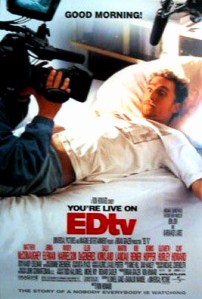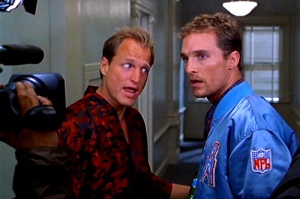Bloggers Code of Ethics:
Celebrity Gossip Blogs
Amanda Apicelli, Henry Forbes, Annie Zinkus, RJ Marceau, & Dina Cashman
PREAMBLE
Members of the Society of Celebrity Gossip Blogs believe that sharing insights about those in the public sphere is a critical element to the public. The duty of celebrity bloggers and journalists is to shed light on the figures that so many look up to. While these public figures have the right to privacy it is the job of celebrity bloggers and journalists to give the public all the information on their role models and decision makers. To some extent, these figures need to be held to a higher standard and celebrity bloggers help hold them to those standards all while sharing vital information to the public. Keeping integrity and honesty at the forefront starts with being thorough and credible. Members of the society agree that those who benefit financially via the public sphere should be 100% transparent, and if they can not be it is the job of bloggers and journalists to step in and relay the vital information to the public.
Freedom of Speech: The right to a personal opinion, but the need to separate opinion from fact
As a gossip blogger, you have the right to voice your own opinion. You contain the basic rights of producing unique and independent content on the internet. However, you must make it obvious that your opinions are your opinions, and are not cold, hard facts. Opinions about a celebrity or public figure must be presented in a way that would not lead the reader to question validity or lead the reader to believe them to be facts.
Celebrity gossip blogger Perez Hilton values his right to freedom of speech (Hilton, 2015). Although many of the stories that he posts to his blog harshly criticize and mock celebrities and public figures, he has a right to do so. He does a great job at presenting facts and facts, and either starts or ends his posts with is own opinion as to not mix the two and confuse the reader.
Libel and Slander: Avoid posting content that can cause harm to one’s reputation
When it comes to posting images, bloggers should choose photos with an ethical interest in mind. Photos should be relevant to the story and information being portrayed and should not be chosen or shown out of context. Photos should also not be retouched in order to depict a different or untrue message, and if photos have been retouched, it should be stated. Portraying children and people affected by tragedy or grief should be a sensitive subject that should be thought out.
In terms of other content, the accuracy of facts must be checked before making a post public, especially if the information could potentially harm the individuals involved. If a mistake is made on a post, the information should be updated and corrected immediately. In judicial cases, one should wait until a formal charge has been filed before stating facts and names. The blogger should also show good taste when dealing with celebrities and public figures. They should not draw unnecessary attention to a personal or private aspect of a subject’s life that is not already in the public sphere. The pursuit of information should not harm the individual based on their circumstances.
Privacy: Seek permission whenever possible
Gossip bloggers should entertain but also keep an ethical framework in mind, concerning reputations. When faced with using content from social networking websites, bloggers should seek permission whenever possible, when subjects are involved. They should also only use sources and quotes from Facebook and other social media networking sites if necessary and always try to seek permission before posting content from other pages.
If using anonymous account user names, make sure to provide a link to an email contact if subjects in articles have opinions or questions. No name targeting of followers should be allowed on the blog. Followers can share their opinions but should not act harshly towards one another. When posting gossip about others blogger should Make sure all facts and stories are correct to the best of their ability before instantly sharing with all of the blogger followers.
Gossip bloggers should take care in not accepting bribes.This pertains especially towards individuals who are being posted about if they are really in the wrong. Bribes should also not be accepted by those who wish to persuade bloggers to frame articles in a certain way.
Credibility : Maintain the quality of being trusted and believed in
In any form of Journalism or Writing, being credible is very important. Any media outlet or blogging site that reports false claims can lose their credibility by messing up one report. Sites such as TMZ are a big enough name that if they report false claims they can still hold their high credibility.
TMZ has had its history of false reports. In 2009 TMZ posted a photo of “JFK” partying on a boat with topless young ladies (Sonney 2013). The photo turned out to be from a Playboy spread. TMZ also in 2013 reported that rapper Lil Wayne had died due to seizures (Sonney 2013). Lil Waynes friends went on Twitter and reported that the rumors were false and Lil Wayne was fine (Sonney 2013). Wayne’s good friend T.I. called out TMZ on this mistake on his Twitter (Sonney 2013). T.I. had some choice words for the organization that aren’t appropriate.
Any blogger specifically in gossip blogging must be credible because once they report any false claims people will turn on you. Especially with the rise of social media and information always accessible being credible is very important.
References:
Hilton, P. (2015). PerezHilton. Retrieved from:
Homepage
Sonney, J. (2013). The 10 biggest TMZ false reports. Elite Daily. Retrieved from:
http://www.elitedaily.com/
 Edtv is a film that focuses mainly on the issue of privacy in the entertainment industry. The story centers around Ed Pekurny, who was a nobody in his society up until he agrees to have his life recorded and broadcasted to the entire country on a television show called Edtv. Throughout his short-lived television fame, he comes across many ethical issues regarding the privacy of himself and the people around him (Edtv, 1999). This film is a great example of the struggle that reality television stars face when it comes to privacy.
Edtv is a film that focuses mainly on the issue of privacy in the entertainment industry. The story centers around Ed Pekurny, who was a nobody in his society up until he agrees to have his life recorded and broadcasted to the entire country on a television show called Edtv. Throughout his short-lived television fame, he comes across many ethical issues regarding the privacy of himself and the people around him (Edtv, 1999). This film is a great example of the struggle that reality television stars face when it comes to privacy. Because Ed had signed a contract to be the star of the television show, his basic right of privacy was taken away from him. The only time that he gets the privilege of privacy is late at night for a couple of hours before he wakes up again in the morning. From the moment he wakes up until he falls asleep everything that he does as well as everything that the people around him do is broadcasted to the nation. This unfortunately, and naturally, creates a strain on his close relationships between his family, his friends, and his girlfriend. It is unnatural to have your life displayed to the public 24/7, and although the personal aspects of Ed’s life were entertaining for a while, the audience soon understood the struggle that he had been put through and were supportive when he decided that this life was too much (Edtv, 1999).
Because Ed had signed a contract to be the star of the television show, his basic right of privacy was taken away from him. The only time that he gets the privilege of privacy is late at night for a couple of hours before he wakes up again in the morning. From the moment he wakes up until he falls asleep everything that he does as well as everything that the people around him do is broadcasted to the nation. This unfortunately, and naturally, creates a strain on his close relationships between his family, his friends, and his girlfriend. It is unnatural to have your life displayed to the public 24/7, and although the personal aspects of Ed’s life were entertaining for a while, the audience soon understood the struggle that he had been put through and were supportive when he decided that this life was too much (Edtv, 1999).
 e messages that have been previously presented to children encourage them to pester their parents for products, promotes snacking in between meals, and portrays positive outcomes for consuming these unhealthy foods. To them, consuming these foods is portrayed as cool, fun, and exciting (“Food Marketing to Youth, 2013). What is not portrayed to them is the consequences of consuming these foods. It is obvious that companies are not willing to advertise the negative effects of their products, so they will now have to either pull advertisements or start creating products that are healthier in order to advertise to the same audience.
e messages that have been previously presented to children encourage them to pester their parents for products, promotes snacking in between meals, and portrays positive outcomes for consuming these unhealthy foods. To them, consuming these foods is portrayed as cool, fun, and exciting (“Food Marketing to Youth, 2013). What is not portrayed to them is the consequences of consuming these foods. It is obvious that companies are not willing to advertise the negative effects of their products, so they will now have to either pull advertisements or start creating products that are healthier in order to advertise to the same audience.